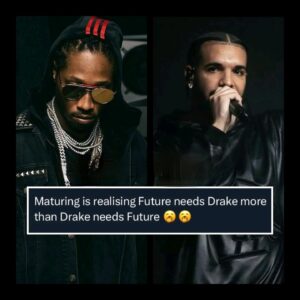In a room filled with anticipation, a picture of the couple—once the epitome of love and happiness—suddenly lit up the large screen behind her. The audience, gathered for an event that many thought would celebrate new beginnings, was instead met with a moment of profound vulnerability. A collective gasp swept through the crowd, as the image, once a symbol of connection, now echoed with the unmistakable silence of a love that had come undone.
For the woman standing on stage, it was more than a picture; it was a visual representation of a relationship that had been through its phases—joy, pain, laughter, and ultimately, heartache. She stood still, her posture composed but her eyes betraying the emotional undercurrent stirred by the image behind her. This was not a carefully curated moment. This was raw, unexpected, and painfully real.
The picture itself told a story that words could only attempt to explain. It captured the couple at a happier time—arms wrapped around each other, smiles unguarded, gazes that spoke of a future they believed would be spent together. But that moment, frozen in time, now felt distant, almost foreign, a haunting relic of what once was.
As the audience watched, many exchanged uneasy glances. What was supposed to be a celebration now felt like a memorial for a relationship that had quietly unraveled. The event had taken a different turn. It was as if everyone in the room had been invited into the private world of this couple, but not to witness their joy—rather, to witness the silent collapse of their bond.
For some, it was a moment of empathy. Those who had been through the pain of a breakup knew the vulnerability that comes with having your most intimate moments put on display. There were whispers among the crowd, subdued conversations about the power of love and how fragile it could be. The image loomed large, not just physically on the screen but emotionally in the hearts of those watching.
The woman on stage shifted her stance slightly, regaining composure. She seemed to understand the gravity of the moment, and perhaps knew it was inevitable that this chapter of her life would play out publicly. After all, theirs had been a relationship that was often admired, the kind that others aspired to emulate. But now, the same people who once looked up to them were witnessing the final, undeniable proof that not all love stories have a happy ending.
The projection of the pair wasn’t just a reminder of their past, but also of the journey that had led them here. It was a journey that may have started with passion and excitement but had slowly and surely weathered storms. Whether it was the pressures of modern life, external influences, or simply the passage of time, something had shifted in their once solid foundation.
As the image stayed on the screen, it became clear that this was more than just a personal moment—it was a reflection of a universal truth. Love is not always enough. Even when it seems unbreakable, it can falter under the weight of circumstances, miscommunication, or differences that grow too vast to bridge.
Some members of the audience watched intently, others turned their gazes away, as if out of respect for the private pain that was now so publicly exposed. But no one could ignore the intensity of the moment. It was the kind of scene that made you question your own relationships, your own connections. What happens when the love you thought would last forever begins to fade? How do you reconcile the memories of what once was with the reality of what is?
As the event continued, the screen finally dimmed, and the woman, now standing with renewed strength, began to speak. Her voice, steady yet laced with emotion, acknowledged the complexity of the situation. She didn’t shy away from the truth; she embraced it. In that moment, she wasn’t just a figure in a broken relationship—she was a person reclaiming her story, choosing to step forward despite the pain.
She didn’t dwell on blame or bitterness. Instead, she spoke of growth, of the lessons learned through love and loss. The image of the pair behind her was no longer the focal point; it was simply part of the past, a reminder of a chapter that had come to an end. Her words were a testament to resilience, to the strength it takes to acknowledge when something is over, and to the courage required to move forward.
The crowd, now hushed, listened with a mix of respect and reflection. For many, it was a moment of revelation. Relationships are not defined solely by the love they begin with, but by how both people handle the inevitable challenges along the way. And sometimes, parting ways is not a sign of failure but of growth—an acknowledgment that even the deepest bonds can change, and that it’s okay to let go when the time is right.
As the event concluded, the air was thick with emotion, but there was also a sense of closure. The picture on the screen had been powerful, but it no longer held the same weight. It was a moment from the past, and like all memories, it would fade with time.
For the woman who had stood beneath it, this was a turning point. She had faced her pain publicly, but in doing so, she had also reclaimed her future. No longer defined by the relationship that had ended, she was free to write a new chapter, one that would be shaped not by the love she had lost, but by the strength she had gained.
This version dives deeper into the emotional impact, not only on the woman but also on the audience, and broadens the narrative to reflect universal themes of love, loss, and resilience. Let me know if you want to focus on any specific part or detail!






